To learn much more about Japanese Ghosts, check out my book Yurei: The Japanese Ghost
What is a yokai? What is a mononoke? What is a bakemono? Are yurei also yokai? These seemingly basic questions have no precise answers. Almost everyone has their own ideas, and they seldom agree with each other. Because folklore isn’t a science.
Defining these words is like trying to define “monster” or a “superhero.” I have seen (and participated in, ‘cause that’s how I roll) debates on whether the xenomorph from the “Alien” films belongs in a category of “movie monsters.” Some say that because it is an “alien”—and aliens aren’t traditional folkloric monsters—it can’t be a monster. (I disagree.) But the word “monster” isn’t clearly defined. Basically, anything scary can be a monster. So by that token, are ghosts “monsters?” What about “human monsters” like serial killers? Dragons in fantasy movies? When does something stop being a monster? Or start being a monster? What about the Cookie Monster? Or Monsters Inc.?
And how about superheroes? Even though he lacks super powers, Batman is generally accepted as a superhero, but how about Sherlock Holmes? Or Tarzan? Or Gilgamesh, Beowulf, and Heracles? Where do you draw the line? Should the line be drawn at all? Does popular consensus matter?
As you can see, there is no real answer. Just opinions. And almost all of the great folklore researchers have their own opinions. They disagree with each other on the definition and categorization of yokai, on exactly what a yokai is and if a yurei counts as a yokai or not. Almost every book on yokai and yurei begins with the definition of terms—what that particular researcher/writer considers to be a yokai or a yurei.
You just kind of have to pick your camp and decide who makes the most sense to you. Or start your own camp, because that’s valid too. Just don’t expect anyone to agree with you.
Etymology of Yurei and Yokai
Hansho from Osaka Prefectural Library
Like (almost) all kanji, the characters for yurei and yokai originate from Chinese. According to researcher Suwa Haruo, the kanji for yurei (幽霊) first appeared in the works of the poet Xie Lingyun who wrote during the time of China’s Southern Dynasty (5 – 7 CE). The kanji for yokai (妖怪) appeared much earlier, in the classical 1st century Book of Han (漢書) which coincidentally also records the first known mention of the island of Japan. (Strange that the first known use of yokai and the first known mention of Japan appear together—there is some deeper meaning in that!)
Neither word has quite the same meaning in Chinese as it does in Japanese. Chinese uses the kanji 鬼 (gui) to mean ghost, which was imported into Japanese as the word “oni.” And the Chinese usage of 妖怪 (yokai) refers specifically to human beings under some sort of supernatural influence. (This is all according to Suwa Haruo, by the way. I have no personal knowledge of the Chinese language!)
Japan imported both terms, with yokai first appearing in the 797 CE history book Shoku Nihongi (続日本紀 ; Chronicles of Japan Continued), the second of the six classical Japanese history texts. Yokai described an unseen world of mysterious, supernatural phenomena. The term represented something invisible, without form or identity; a mysterious energy that pervaded the deep forests, oceans, and mountains.
In truth, the word “yokai” was barely used at all. Ancient Japan had a more common name for this invisible, mysterious energy—mononoke. The idea of mononoke was something to fear—a mysterious, natural force that could come out any time and kill you, like a lightning strike or a tidal wave. It took the artists of the Heian period to give form to this mysterious energy, and transform the mononoke into bakemono, changing things. And then it took the writers of the Edo period to take these shapes and give them stories. Few of these artists and writers would have recognized their work as “yokai.”
Yokai as a word only came into general use the during the Meiji period, thanks to folklorist Inoue Enryo (1858 – 1919). He founded a field of study he called Yokaigaku, or Yokai-ology. Inoue used the term “yokai” in the same way we would say Fortean phenomenon—meaning any weird or supernatural phenomenon. Wanting Japan to move into the modern world, Inoue used the term “yokai” to point out the foolishness of believing in such things in a scientific age, and vowed to shed light into the dark, superstitious corners of Japan. He hoped to eradicate “yokai” by studying it and explaining it scientifically.
Yanagita Kunio’s Yurei vs. Bakemono
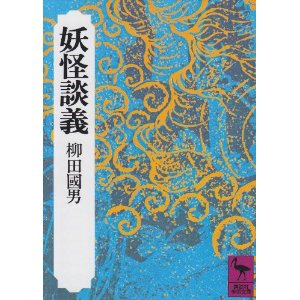 Yokai Dangi cover from Amazon.co.jp
Yokai Dangi cover from Amazon.co.jp
Yanagita Kunio took the next attempt at parsing out the various folklore and coming up with some kind of workable system or definitions. Yanagita put differentiated between “obake/obakemono”—being bound to a particular place, and “yurei”—being able to move freely, yet bound to a specific person. Here’s what he said in his Yokai Dangi (妖怪談義;Discussions of Yokai):
“Until recently there was a clear distinction between obake and yurei that anybody would have realized. To start with, obake generally appeared in set locations. If you avoided those particular places, you could live you entire life without ever running into one. In contrast to this, yurei—despite the theory that they have no legs—doggedly came after you. When [a yurei] stalked you, it would chase you even if you escaped a distance of a hundred ri. It is fair to say that this would never be the case with a bakemono. They second point is that bakemono did not choose their victims; rather they targeted the ordinary masses … On the other hand, a yurei only targeted the person it was connected with … And the final point is that there is a vital distinction regarding time. As for a yurei, with the shadowy echo of the bell of Ushimitsu [the Hour of the Ox, approximately 2-2:30 AM], the yurei would soon knock on the door or scratch on the folding screen. In contrast, bakemono appeared at a range of times. A skillful bakemono might darken the whole area and make an appearance even during the daytime, but on the whole, the time that seemed to be most convenient for them was the dim light of dust or dawn. In order for people to see them, and be frightened by them, emerging in the pitch darkness after even the plants have fallen asleep is, to say the least, just not good business practice.”
Translation from Pandemonium and Parade: Japanese Monsters and the Culture of Yokai.
In Ikeda Yasaburo’s book Nihon no Yurei he almost agrees with Yanagita, seeing two distinct types of yurei. The first kind, as evidenced by the story The Chrysanthemum Vow, show a spirit with a specific purpose and attachment towards another human being. They have the ability to travel, to move “a hundred ri” as Yanagita puts it. The other kind of spirits, as evidenced by The Black Hair, are those spirits bound to a particular place. They may have some sad story keeping them put, but ultimately it is the location that matters.
Ikeda says:
“Usually I just call both types yurei, but it might make sense to make a distinction. You could call the first group—the ones bound to a specific person—yurei, and the second group—those bound to a specific location—yokai. But these groupings are just made for ease of discussion. In truth, the spirit realms are far too complicated for simple classification; any rule or distinction you make is immediately broken.”
Obviously, Ikeda is correct; Yanagita’s distinctions fail the simplest of tests. Look at three of Japan’s most famous ghosts, Okiku (Bancho Sarayashiki), Oiwa (Yotsuya Kaidan), and Otsuyu (Botan Doro). The plate-counting Okiku is bound to her well, and by Yanagita’s definition would be an obakemono and not a yurei. Oiwa is free to travel where she wills, but doesn’t care at all about the Hour of the Ox. When she appears at her husband’s wedding, it is the middle of the day. And the Chinese origin of Otsuyu means that she obeys almost none of Yanagita’s rules, making her neither obakemono nor yurei.
Yanagita was one of Japan’s first folklorists, and a great researcher and gatherer of tales, but I often disagree with his conclusions. Not for any fault of his own; Being the first, he was operating with a limited amount of materials and information, and not able to discuss or cross-reference his findings.
Mizuki Shigeru’s Inclusive Yokai World
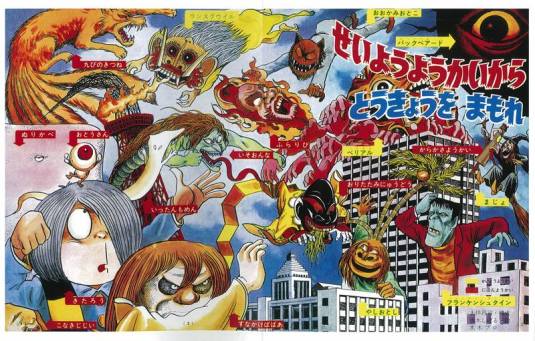 Japanese Yokai battle Western Yokai in Mizuki Shigeru’s Great Yokai War
Japanese Yokai battle Western Yokai in Mizuki Shigeru’s Great Yokai War
Mizuki Shigeru takes a much broader approach, In his Secrets of the Yokai – Types of Yokai he put everything under the general term of “Yokai” (or “Bakemono,” which he considers the same thing”) and then broke it down into four large categories, one of which is “Yurei.” Mizuki started studying yokai seriously in his 60s when he had largely retired from drawing his famous Kitaro comic. He also did something Yanagita Kunio had never done—he traveled the world and learned about the folklore of other countries, and compared it to his native Japanese folklore he knew so well. From this, he developed a definition of yokai that was as inclusive as possible, broadening the use of the word “yokai” outside of Japan to include “Western yokai” and monsters, and the natural phenomenon and deities of all countries.
Mizuki’s approach is the most widely accepted today, as seen by the Japanese definition of yokai from Wikipedia:
“Yokai as a term encompasses oni, obake, strange phenomenon, monsters, evil spirits of rivers and mountains, demons, goblins, apparitions, shape-changers, magic, ghosts, and mysterious occurrences. Yokai can either be legendary figures from Japanese folklore, or purely fictional creations with little or no history. There are many yokai that come from outside Japan, including strange creatures and phenomena from outer space. Anything that can not readily be understood or explained, anything mysterious and unconfirmed, can be a yokai.”
I personally fall into Mizuki’s camp—I believe yokai are so much more than just Japanese monsters. In fact, if you look at Toriyama Sekien’s yokai encyclopedias many Japanese yokai did not originate in Japan—they are characters from Chinese folklore or Indian Buddhism added to Japan’s pantheon. And even inside Japan, yokai encompass so much more than monsters. There are yokai winds. Yokai illnesses, Yokai transformed/possessed humans. Pure yokai monsters.
But then again, I am as guilty as anyone for also using the word yokai as a shorthand for Japanese monsters. Because it is convenient, and gets the meaning across in a simple fashion. And sometimes, convenience trumps accuracy. Because folklore isn’t a science.
Yurei and Yokai – Dead Things
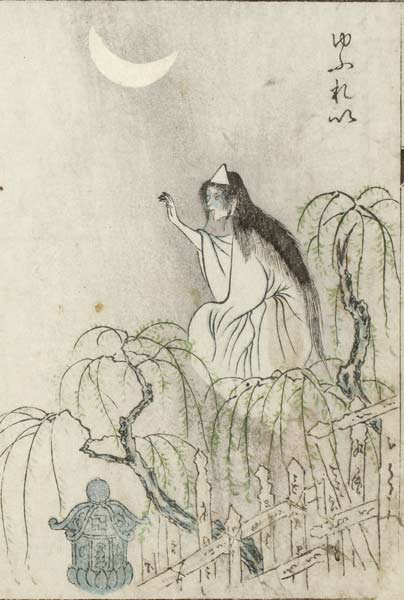 Yurei entry from Toriyama Sekein’s Hyakkai Yagyo
Yurei entry from Toriyama Sekein’s Hyakkai Yagyo
Then you get into a whole other area—Are yurei a type of yokai? Or are they something different? Again, there is no universally accepted answer. Yanagita Kunio considered yurei to be yokai, but not bakemono. Mizuki Shigeru considers yurei to be one of the Big Four categories of yokai. Matt Alt calls yurei and yokai out as two separate things in his books Yokai Attack! and Yurei Attack!: The Japanese Ghost Survival Guide
. (I respectfully disagree.)
To me, this is the easiest question—of course, yurei are yokai. All you have to do is look at the yokai collections from the Edo period. Yurei were always included as entries. Edo period kaidan-shu freely mixed ghost and monster stories. Games of Hyakumonogatari Kaidankai always included strange stories of any type, with no differentiation between yurei and yokai. They were all just “weird tales.”
For that matter, some yokai monsters are in fact dead humans who returned as yokai. Many things can happen to a human spirit after death. They can move on to peace, transform into a yurei and haunt away, or transform into a monster with a life that lasts far beyond their death. Perhaps the most famous example is the Emperor Sutoku who died and was reborn as the Evil King of the Tengu, a story that appears in both the Hōgen Monogatari and Tales of Moonlight and Rain (Translations from the Asian Classics)
. Or there is the massive Gashadokuro, sometimes said to be the assembled bones of people who died of starvation. Or Dorotaro, the spirit of a farmer whose fields were mistreated by his son.
There are many others. Yurei is clearly just one form a human being can manifest as after death. They can become kami. They can become yurei. They can become yokai. All though saying “they can become yokai” is redundant, as they are all yokai.
Religion and Yokai – Degraded and Unworshiped Gods
Another thing Yanagita Kunio says—and this I agree with him on—is that some yokai are the traditional, historical, and forgotten gods of Japan. In his book Hitotsume Kozo he outlines his “degradation theory,” showing how ancient gods are slowly demoted into small-time monsters, and then folktales. He uses the kappa as an example. Once a powerful water deity—and there are still a few kappa shrines in Japan—the kappa was demoted over the centuries to a beastly monster, to something almost harmless, until now it is little more than one of Japan’s “cute character mascots.”
Many yokai also share strong ties with Buddhism. During the Edo period Kaidan Boom, several strange monsters and gods were imported from India and China and recast in roles as Japanese yokai. As with Yanagita’s degradation theory, these once-mighty beings become silly goblins in the Japanese pantheon,
Komatsu Kazuhiko put forward the idea that yokai are sort of the B-List of the kami pantheon, the “unworshiped gods.” It has long been thought that spirits can be transformed into kami via ritual and worship. By that measure, yokai are simply proto-kami, amassed spiritual energy that has managed to take form, but needs the extra boost from human worship to advance to the next stage and become a true kami.
Just as many yokai have no connection to religion at all. Toriyama Sekein created a host of yokai for his books, some of which were just ghostly twists on plays on words or popular phrases. Kyokotsu the Crazy Bones being one of the most obvious examples. A few hundred years later, and these Toriyama-invented yokai are considered just as valid as something like a kappa that is thousands of years older.
Modern Yokai
When you ask “What’s the Difference Between Yurei and Yokai?” you sort of have to decide if you mean historical, or modern. In the Edo period and older, there was absolutely no difference. You go back even further, and yokai and yurei are indistinguishable. But as we move more and more into the modern manga-influence era, where yokai are being used as characters in comics, and the meanings of the words appear to be changing.
I think manga is the biggest influence on yokai today. Comics like Kitaro, Inuyasha
, and Nura: Rise of the Yokai Clan
are teaching a new generation of readers what yokai are, and it is something entirely different from what Yanagita Kunio recorded in his notebooks. Modern yokai have distinct personality and complex motivations, instead of Yanagita’s repetitious monsters bound to their locations and lacking true motive power. And yurei are being left out of the party, treated as something different from yokai entirely.
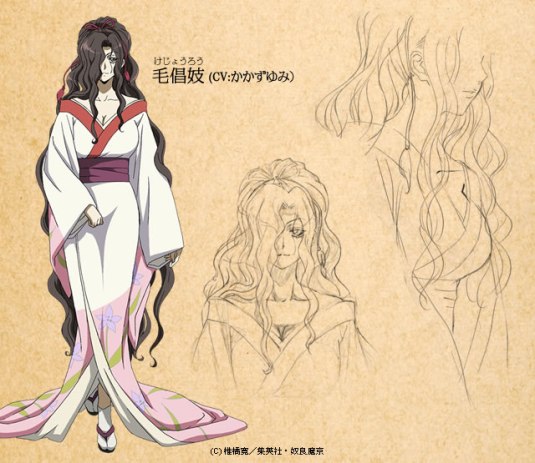 Kejoro from Nura: Rise of the Yokai Clan
Kejoro from Nura: Rise of the Yokai Clan
Those manga yokai are probably just as valid as Toriyama Sekein’s yokai catalog. The definitions of yurei and yokai have changed over the centuries, and will continue to change going into the future. Because “change” is at the heart of yokai. They mold to meet the needs of the current generation. They are mutable.
In his book Pandemonium and Parade: Japanese Monsters and the Culture of Yokai, Michael Dylan Foster puts it best. He says he ”intentionally leaves the definition open-ended, for the history of yokai is very much the history of efforts to describe and define the object being considered.”
Translator’s Note:
This is a long, rambling answer to a question by reader Chiara Leerendix, who was having a debate with her professor on the differences between yurei and yokai. He claimed that yurei were spirits of the dead and related to death and religion, while yokai were just monsters without any deeper meaning or religious connection. Obviously, I disagree with that. But the debate is ongoing.
While I don’t have an exact answer for Chiara, hopefully this will provide her with some good arguing points to take to her professor. Of course, her professor is welcome to respond to this post as well!
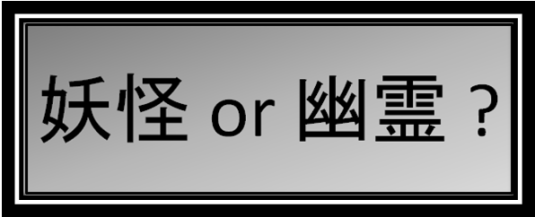
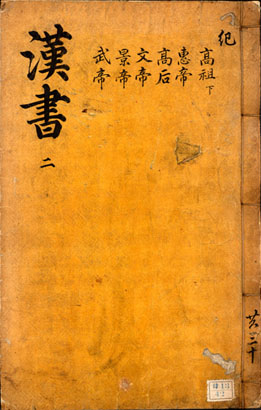
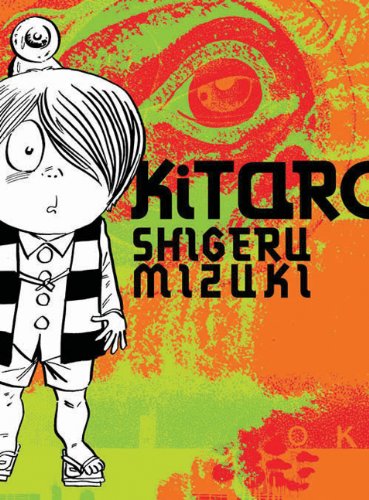


Nov 16, 2013 @ 10:25:48
Mizuki’s definition of yokai is very interesting, especially when one remembers how, in the West, we also use “Fairy” or “Fair Folk” when talking about creatures in other countries. This actually also reminds me of the anime Vampire Princess Miyu. That one had yokai-like creatures called “Shinma,” and the show mostly showed Japanese ones. But some episodes had “Western Shinma,” who had a more Medieval European feel as opposed to the usual Feudal Japan motif; one in particular was something of a black knight-type character, if I recall.
Great article, as always. ^_^
Nov 18, 2013 @ 22:38:20
True. And especially true when you look at early translations of kaidan and yokai stories from the 1900s. They are almost always called “Japanese Fairy Tales” and were filled with ogres, fairies, water imps, and other things put into Western context.
Nov 16, 2013 @ 11:41:59
Whew! An excellent article! I think nowadays, for many people, the cultural pespective also makes a difference. In Western culture, the bounderies between various “super” naturals are often more closely drawn than in Japan. A Ghost is a spirit of the Dead, haunting wherever it is, for what ever reason. It is not a force of nature. Superman is a “Super Natural” hero, he was born that way. Batman is a “Super Hero,” he puts time, effort, and money into making the world a better place. Anyone who is willing to work at it can become a hero like him. Superman is a Yokai, Batman is not… but he is still a “Super” HERO.
Nov 17, 2013 @ 16:38:48
Very interesting, and probably an entry I will link people back to if the topic ever comes up! I know I’ve run into translation issues trying to explain yokai culture to people who are entirely unfamiliar with Japanese culture. I agree that it’s a handy blanket term to refer specifically to the Japanese pantheon, even though it’s usage could be wider. I’ve always enjoyed the East/West monster mash-ups in Kitaro and Vampire Princess Miyu. I don’t think anime/manga culture would be what it is today without Shinto/yokai background as it’s familiar enough to the Japanese market that people have a demand for it, yet it keeps things fresh and new enough to keep it interesting for this generation. Plus, has any other country produced such an array of collectable monster trading cards?
I would make more distinction between kami and yokai, however. If you consider Shinto in a wider context than just kami, one of its only spiritual considerations or moral codes is purity. A shrine is set apart from the world as a pure space, and impurities, such as death or–historically–menstrating women, are kept out of the shrines due to their impurity. Many yokai are associated with rather unclean parts of the world. While it’s easy to wrap them all in the same unseen, mysterious realm, responsible for phenomenon good, bad, and strange, my main distinction is that a kami is a pure being, and a yokai is an impure being, and to go along with your distinction, therefore not worthy of worship or inadequately worshiped. Purity and impurity do not necessarily mean good and evil, though.
Nov 18, 2013 @ 22:44:21
Sure, but keep in mind that the purity of Shinto is ritual purity. The kami are not themselves pure .. they have been purified by ritual and worship and the restrictions are to maintain that pure space, to eliminate contamination in an area that has been ritually cleansed.
Worship and ritual have always been tools for transforming dangerous, “wild” energy into safe and contained kami spirits. Kami are like lightning or fire–dangerous in its uncontrolled state but beneficial if trapped and controlled. And many kami are onryo–vengeful ghosts–transformed into kami via ritual and enshrinement.
Which is what Komatsu Kazuhiko says, that yokai are the same essential kami energy but ones who were never purified, never worshiped or enshrined. The energy found other means of expression, becoming yokai instead of kami.
Nov 28, 2013 @ 21:45:07
I agree absolutely with Mizuki.
Apr 21, 2016 @ 21:42:12
Oh Thank goodness! Glad to get some clarification on the whole deal. So when I think of Oni…they are a type of Yokai that belong to the Demon-Realm, and when I think of Yurei, they are type of Yokai belonging to the Ghost-Realm. I think I’m starting to understand this better now.
So in cases like Kitsune, and such..they’re more in-line as nature spirits rather than being formed from a human-spirit?
Apr 21, 2016 @ 21:49:01
Just to add…and when you get Yurei-like monsters (Collection of evil spirits)..they are just another Bakemono that didn’t choose to form into a singular Yurei? I think I’m getting this now! 🙂
May 17, 2016 @ 16:09:23
Close enough! And remember, there is no 100% answer. Folklore changes, and ideas and characters change over time. It’s not science!
Jun 07, 2016 @ 23:26:27
Thank you very much for the article! It was very informative.
I came across your website a few days ago and couldn’t be happier about it! Folklore and legends of Japan have been in my area of interests for quite some time, but recently I have started researching it more fundamentally.
I have a question about this post though. I think I am missing something.
You wrote that:
“According to researcher Suwa Haruo, the kanji for yurei (幽霊) first appeared in the works of the poet Xie Lingyun who wrote during the time of China’s Southern Dynasty (5 – 7 CE). The kanji for yokai (妖怪) appeared much earlier, in the classical 1st century Book of Han (漢書) which coincidentally also records the first known mention of the island of Japan…
…Japan imported both terms, with yokai first appearing in the 797 CE history book Shoku Nihongi (続日本紀 ; Chronicles of Japan Continued), the second of the six classical Japanese history texts.”
Would you please clarify when the kanji for yokai actually appeared first: in the 1st century or in 797? Or maybe different examples of usage are discussed here, so the dates also differ?
P.S.: I also have a request that will probably be too much to ask. But I will take my chances 🙂
Maybe you happen to know about some professors in Japanese national universities who specialize in yokai studies. I would be extremely grateful to you if you could provide me with some names and universities they are associated with.
Jun 07, 2016 @ 23:38:02
No problem! The confusion is just about the countries. 1rst century in China, then 797 in Japan. Sorry if that wasn’t clear!
And I am afraid I don’t know anything about Japanese national universities.
Jun 07, 2016 @ 23:46:34
Oh! Thank you for such a quick reply!
Jul 25, 2016 @ 13:59:07
Hi ! I heard about the word hokaigaku. Do you know it ? Do you know where I can find informations about it ?
Jul 25, 2016 @ 14:00:14
Hi ! I heard about the word yokaigaku. Do you know it ? Do you know where I can find informations about it ?
Jul 25, 2016 @ 14:14:20
“hokaigaku?” Do you possibly mean “yokaigaku?”
Jul 25, 2016 @ 14:40:17
yes, it’s linked to a culture of monsters apparently.
Jul 25, 2016 @ 14:47:21
Yokaigaku just means “Monsterology.” You can learn all about it in this book!
Apr 25, 2017 @ 20:00:22
I have to say, that was a thoroughly enjoyable read =)
Apr 22, 2021 @ 04:00:20
4 YEARS.. YEARSSSS, I cant believe i have missed the this ray of sunshine filtered in through the dark clouds of lies that abound the interwebs( yes, made up word) i feel as though i have somehow been cheated, neigh, robbed of the golden years of learning. perhaps a Digital Yokai is to blame, perhaps i should find myself a protection charm either way, I really have enjoyed reading link after link on here. I love this stuff, and the the fact that it is being discussed and enjoyed by people that see this as folklore, beliefs and ideas and not written law as some i have crossed paths with do, gives my a warm feeling of hope for a world that is so on edge right now that if someone jumped and said boo, most of the earths population would tumble like fainting goats to a engine backfire. But all gushing aside, LOVE the cited referencing, more to read, LOL. What group would you place the smiling woman or Oiwa ( https://en.wikipedia.org/wiki/Yotsuya_Kaidan ) spirit? I have heard stories from the Japanese that say she is ones own guilty conscience manifesting with help from mischievous Yoma or Amanojaku, or that she may be Bakeneko using the scorned lover ploy to trap men, I had another, really sweet older lady at my old job tell me that she is a ayakashi, and the worst kind, because after she tricks and kills the man she turns on the family members for allowing him to do it, whether or not he did anything and she insisted the ayakashi were the angered animal spirits of fallen families from betrayal or war or conflict. and another who insisted that she was nothing more than a vengeful wife or lover, still alive, maybe a Onmyōji herself or that had called Shikigami to do the dirty work. , like i said, these are just a few that i have heard from some amazingly kind elderly couples i have meet, and Nakata Hina sama, she lived in the Tohuku district, i think she said nashiro area, she was the one that told me about the Onmyōji. i was wondering if you know any stories from that area that may have put that thought in her head, because it is very different from most. Thank you Mr. Davisson Sensei for all the work and great articles i will be reading everything in here.
The Ink Fox Devil,
RS-